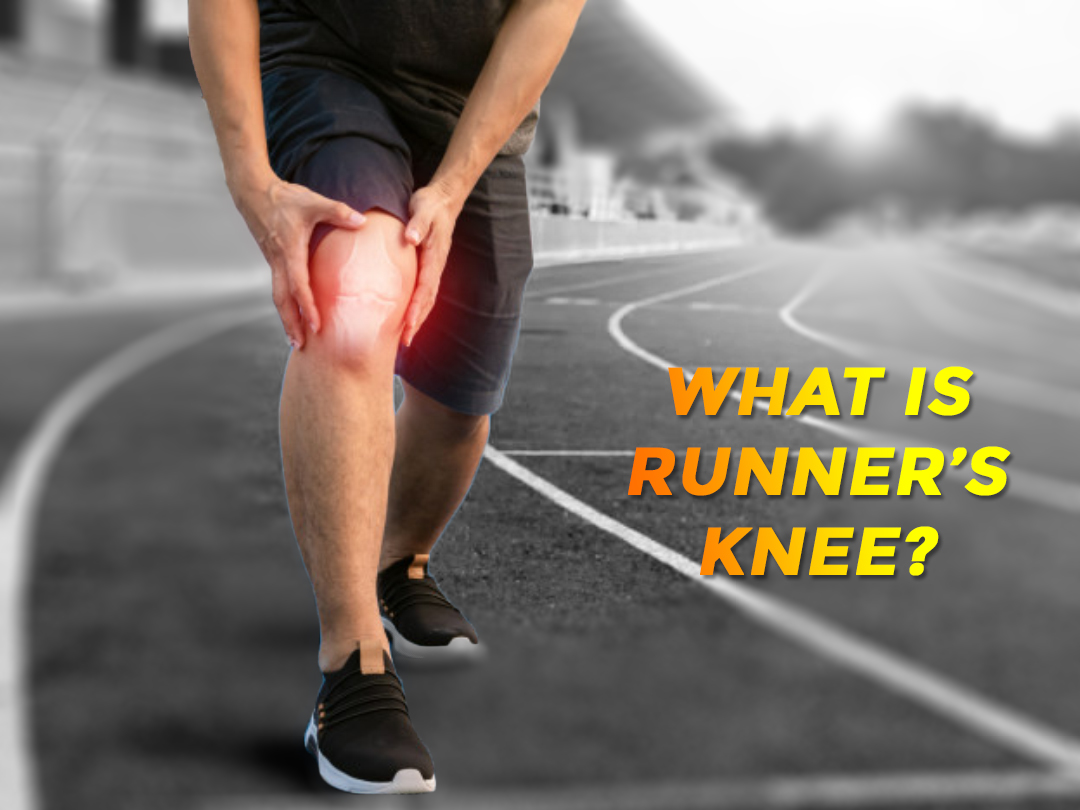Runner’s Knee
Runner’s knee is the common term used to describe any one of several conditions that cause pain around the kneecap, also known as the patella. These conditions include anterior knee pain syndrome, patellofemoral malalignment, chondromalacia patella, and iliotibial band syndrome.
As the name suggests, running is a common cause of a runner’s knee, but any activity that repeatedly stresses the knee joint can cause the disorder. This can include walking, skiing, biking, jumping, cycling, and playing soccer.
What are the symptoms of a runner’s knee?
The main thing is pain. You might notice it:
- Usually in front of your kneecap, though it could be around or behind it
- When you bend your knee to walk, squat, kneel, run, or even get up from a chair
- Getting worse when you walk downstairs or downhill
The area around your knee could swell, or you might hear popping or have a grinding feeling in the knee.
What causes the runner’s knee?
The pain of a runner’s knee may be caused by irritation of the soft tissues or lining of the knee, worn or torn cartilage, or strained tendons. Any of the following can also contribute to a runner’s knee:
- overuse
- trauma to the kneecap
- misalignment of the kneecap
- complete or partial dislocation of the kneecap
- flat feet
- weak or tight thigh muscles
- inadequate stretching before exercise
- arthritis
- a fractured kneecap
- plica syndrome or synovial plica syndrome, in which the lining of the joint becomes thickened and inflamed
In some cases, pain begins in the back or hip and is transmitted to the knee. This is known as “referred pain.”
How is it Diagnosed?
To confirm a diagnosis of runner’s knee, your doctor will obtain a complete history and conduct a thorough physical examination that may include a blood test, X-rays, an MRI scan, or a CT scan.
How is runner’s knee treated?
In most cases, runner’s knee can be successfully treated without surgery. Most often, the first step in treatment is to practice RICE:
- Rest: Avoid repetitive stress on the knee.
- Ice: To reduce pain and swelling, apply an ice pack or a package of frozen peas to the knee for up to 30 minutes at a time and avoid any heat to the knee.
- Compression: Wrap your knee with an elastic bandage or sleeve to restrict swelling but not too tightly as to cause swelling below the knee.
- Elevation: Place a pillow under your knee when sitting or lying down to prevent further swelling. When there is significant swelling, keep the foot elevated above the knee and the knee above the level of the heart.
If you try these techniques and your knee still hurts, ask your doctor if you need to see a specialist, like an orthopedic surgeon. It’s rare, but you may need surgery for severe cases of runner’s knee. An orthopedic surgeon can remove or replace damaged cartilage and, in extreme cases, correct the position of your kneecap to send stress through the joint more evenly.
How can runner’s knee be prevented?
- Stay in shape. Make sure your overall health and conditioning are good. If you’re overweight, speak with your doctor about creating a weight loss plan.
- Stretch. Do a five-minute warmup followed by stretching exercises before you run or perform any activity that stresses the knee. Your doctor can show you exercises to increase your knee’s flexibility and to prevent irritation.
- Gradually increase training. Never abruptly increase the intensity of your workout. Instead, make changes incrementally.
- Use proper running shoes. Buy quality shoes with good shock absorption, and make sure they fit properly and comfortably. Don’t run in shoes that are too worn. Wear orthotics if you have flat feet.
- Use proper running form. Keep a tight core to prevent yourself from leaning too far forward or backward, and keep your knees bent. Try to run on a soft, smooth surface. Avoid running on concrete. Walk or run in a zigzag pattern when going down a steep incline.


